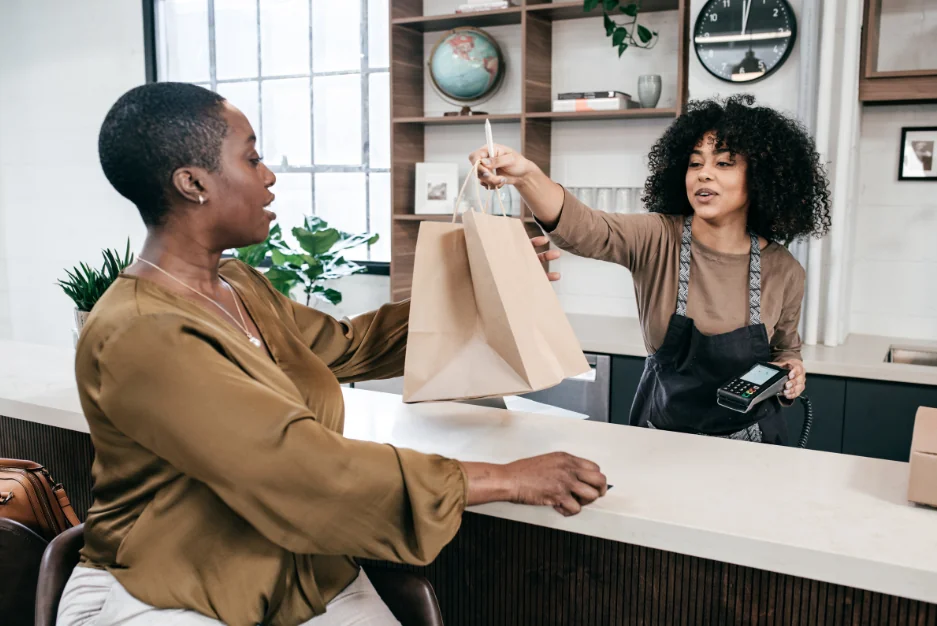Shoptalk Fall 2025 just wrapped in Chicago, bringing together over 3,000 retail leaders, innovators, and decision-makers for three days of insights, strategy sessions, and networking. The crisp September weather in the Windy City set the perfect backdrop for retail’s most action-oriented event of the year, where strategy turns into execution.
AI Is No Longer a Pilot. It’s Infrastructure.
The conversation around AI has fundamentally shifted. Rather than discussing potential applications, retail leaders at Shoptalk Fall shared real results from AI implementations already driving their businesses.
Target’s VP of digital product management emphasized that the best metric for AI-driven search success is when “search becomes invisible,” creating such a seamless customer experience that friction disappears entirely. The retailer is modernizing its search platform to support longer, more conversational queries as consumers adapt to generative AI.
Sam’s Club revealed that they’ve eliminated an estimated 200 million repetitive tasks annually through AI infrastructure, using computer vision checkout arches that process carts in under three seconds and deploying enterprise ChatGPT to over 1,000 frontline workers for real-time insights.
The message was clear: AI is becoming the backbone of retail operations, not a bolt-on technology.
Personalization Is the New Loyalty Strategy
Loyalty programs are evolving beyond points and discounts. The most successful brands are using AI-powered personalization to create emotional connections that drive repeat business.
Taco Bell demonstrated how personalization can transform routine interactions by integrating loyalty data at the drive-thru, allowing team members to greet customers by name, acknowledge their tier status, or celebrate birthdays. These simple touches turn transactions into moments of connection.
Spotify shared that personalization-driven ad targeting increased engagement by 38% and boosted return on ad spend by 45%. The key isn’t just using data. It’s creating experiences that feel natural and authentic rather than algorithmic.
For referral and loyalty marketing, this shift is critical. The brands winning today are those that blend data intelligence with genuine human connection, making customers feel recognized and valued at every touchpoint.
Physical Retail Is Back, And It’s Driving Digital Growth
One of the most surprising themes from Shoptalk Fall was the renewed emphasis on brick-and-mortar stores as customer acquisition engines.
Wayfair’s CFO shared that over 50% of customers who shopped at their Chicago store had never previously interacted with the brand. This proves that physical locations can be powerful acquisition channels even for digital-first companies. Even more interesting: Wayfair found that certain categories like giftables and storage perform better in-store than online, and their nearby fulfillment centers enable one-to-three-day delivery that leaves customers impressed.
The takeaway? The old “e-commerce versus in-store” debate is over. It’s all retail, and the smartest players are making each channel amplify the other.
Speed and Agility Define Modern Merchandising
H&M’s head of merchandising for the Americas highlighted that fashion trend cycles are moving faster than ever. What used to last a full season or six months now requires managing 10 different trends within that same period. Relevance isn’t just about product anymore; it’s about maintaining consistency across every customer touchpoint from website to store to social media.
Shopbop demonstrated this agility in action when they curated and promoted a Taylor Swift-inspired collection within an hour of her engagement making headlines. They balance this rapid response capability with a stable core business, testing micro-trends with small curated assortments before scaling what resonates.
The lesson extends beyond fashion. Retail leaders from Papa John’s to SharkNinja emphasized that brands succeed not by having one great idea, but by building cultures that constantly generate, test, and launch ideas at speed.
Scenario Planning Is Essential in Uncertain Times
Retail leaders emphasized the importance of operational resilience through scenario planning, with brands like Tailored Brands operating with a base plan alongside backup strategies (plan B and plan C) to ensure agility when disruption hits.
Tariffs and margin pressures, rather than being purely negative forces, have given leaders “permission to try something totally new,” with boards urging teams to move faster and some companies appointing Chief Tariff Officers to navigate these shifts.
The constraint is becoming a catalyst for innovation, from accelerating private label development to rethinking supply chain strategies.
Retail Media Networks Are Exploding
Retail media is now the fastest-growing advertising channel, and for good reason. While search took 19 years to reach $1 billion in revenue and social took 13 years, retail media accomplished that milestone in just eight years and now represents 18% of total advertising spend.
The opportunity extends beyond digital. In-store retail media currently represents just 0.1% of ad spend despite in-store audiences being twice the size of digital audiences, making it an enormous untapped opportunity. Brands like CVS, Best Buy, and Hy-Vee are already investing in digital signage and endcaps.
Unified Commerce Is Breaking Down the Walls
True unified commerce connects the entire journey before, during, and after the sale by breaking down silos between online and physical retail. Technologies like RFID, automation, and hyper-local data let retailers optimize stores and tie marketing directly to sales.
American Eagle now conducts 24 billion RFID counts per day across its stores, giving real-time visibility comparable to e-commerce. This level of instrumentation means stockouts should no longer happen in 2025. When a Sidney Sweeney campaign led to a spike in store traffic, the company could immediately see conversion rates and tie campaign performance directly to sales.
Community and Authenticity Drive Growth at Scale
Digital-first brands are proving that scale and authenticity can coexist. ThredUp is redefining social commerce by turning its vast single-SKU inventory into a personalization advantage through community-driven discovery features like ShopSocial, empowering creators to drive engagement.
Perelel built credibility through prenatal supplements and influencer-led storytelling before expanding beyond direct-to-consumer into Amazon, adapting their approach for each platform while maintaining authentic connections.
The lesson? Customers will engage deeply with brands that feel authentic, even as those brands scale across multiple channels.
What This Means for Customer Engagement
For those of us focused on referral marketing and customer loyalty, Shoptalk Fall’s themes paint a clear picture of where retail is headed:
Personalization must be authentic. Data-driven personalization only works when it creates genuine emotional connections. The goal isn’t to show customers you have their data. It’s to make them feel recognized and valued.
Every channel is an acquisition channel. Whether physical stores, social platforms, or retail media networks, successful brands meet customers wherever they are and create seamless experiences that encourage both acquisition and retention.
Speed wins. The ability to rapidly test, learn, and adapt is now more valuable than having the perfect strategy from day one. This applies to everything from merchandising to marketing campaigns to loyalty program features.
Community creates stickiness. The brands building the strongest customer relationships are those fostering genuine communities, empowering creators, and prioritizing authentic connections over transactional relationships.
Constraints spark innovation. Economic pressures and operational challenges are forcing brands to experiment and move faster. The companies thriving are those viewing constraints as permission to try something new rather than reasons to pull back.
As we head into 2026, the retailers thriving will be those who embrace AI while maintaining human connection, who move fast while staying authentic, and who understand that every customer interaction (whether driven by personalization, referral, or loyalty) is an opportunity to create a memorable experience worth sharing.
The future of retail isn’t just about technology or strategy. It’s about turning current challenges into long-term strengths through what Shoptalk Fall called “retail alchemy.” And that’s exactly what the best brands are doing.



